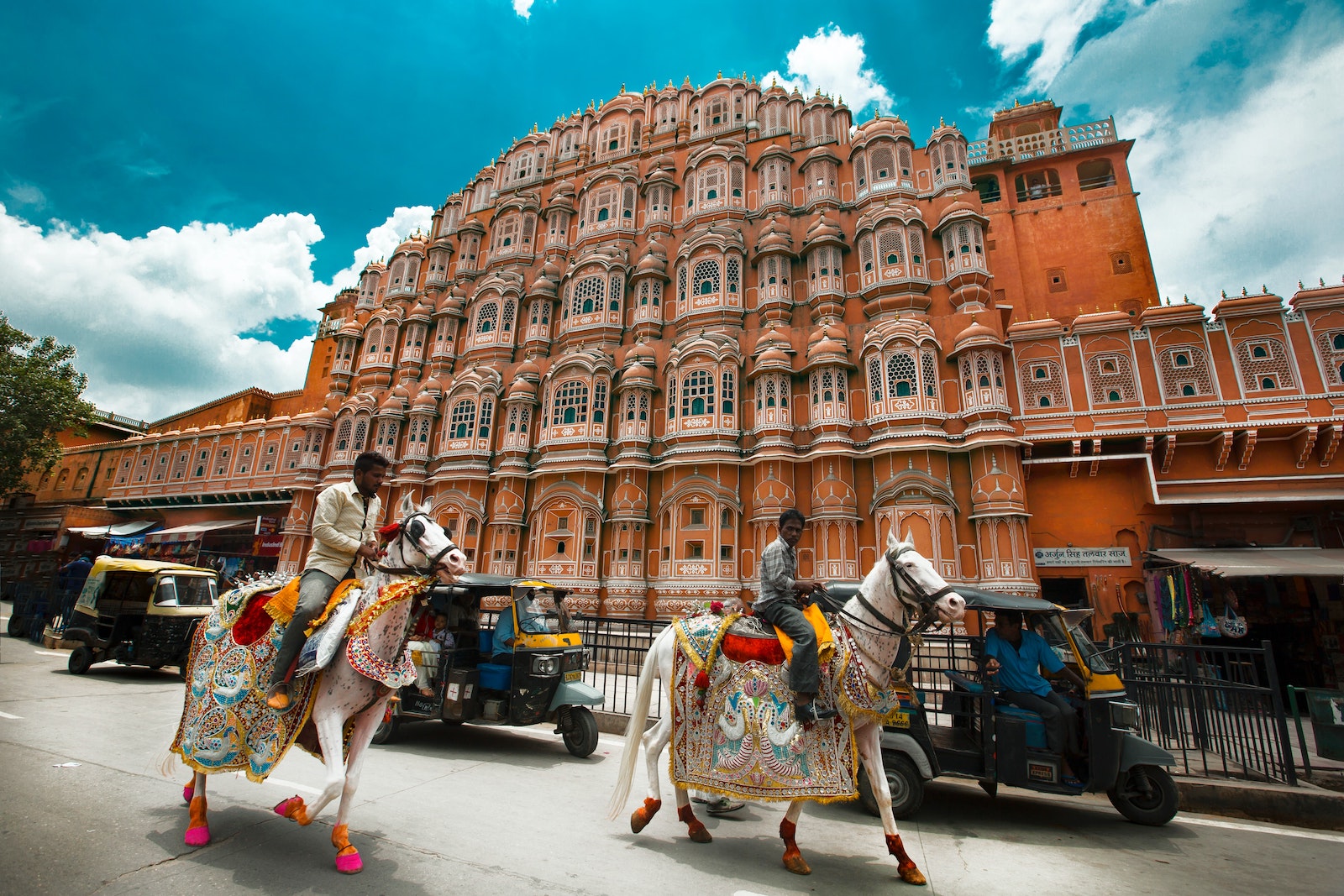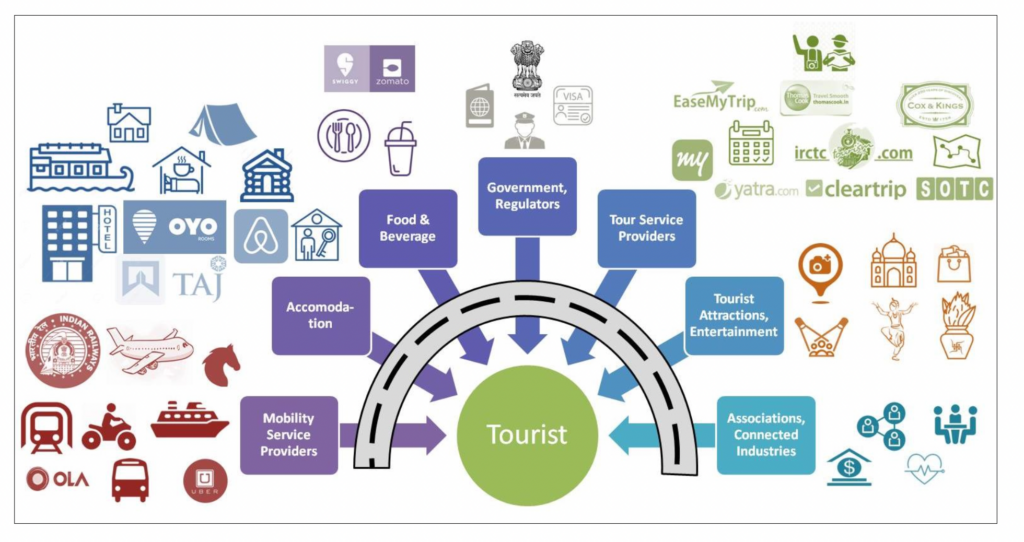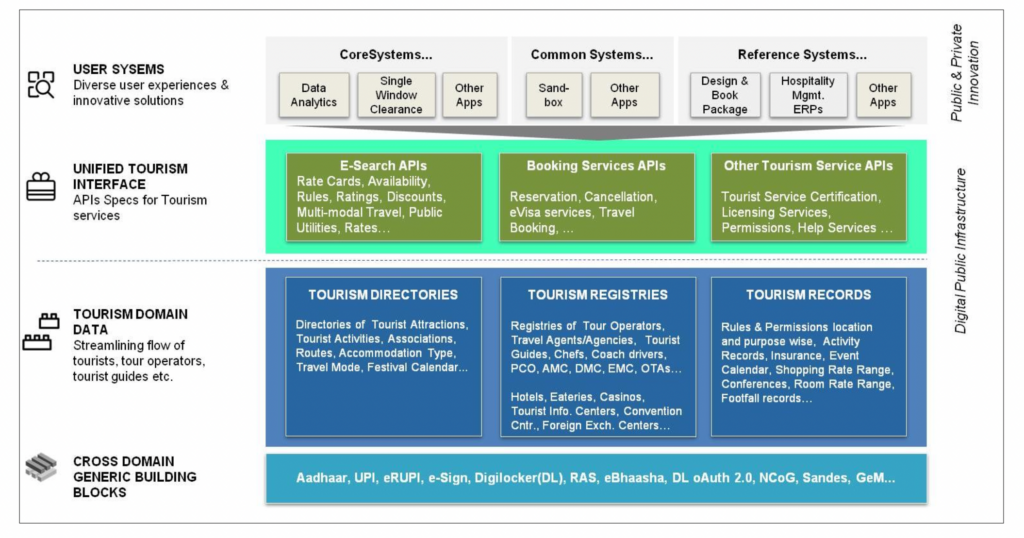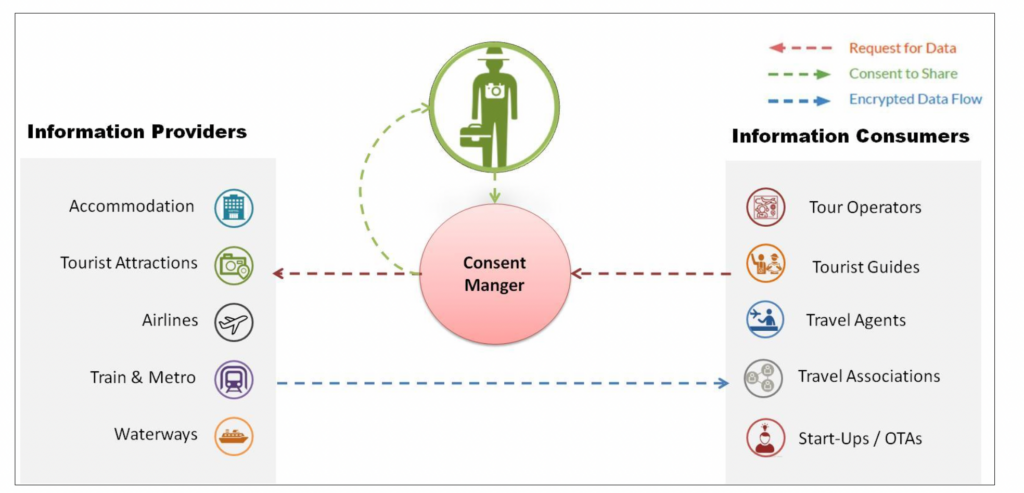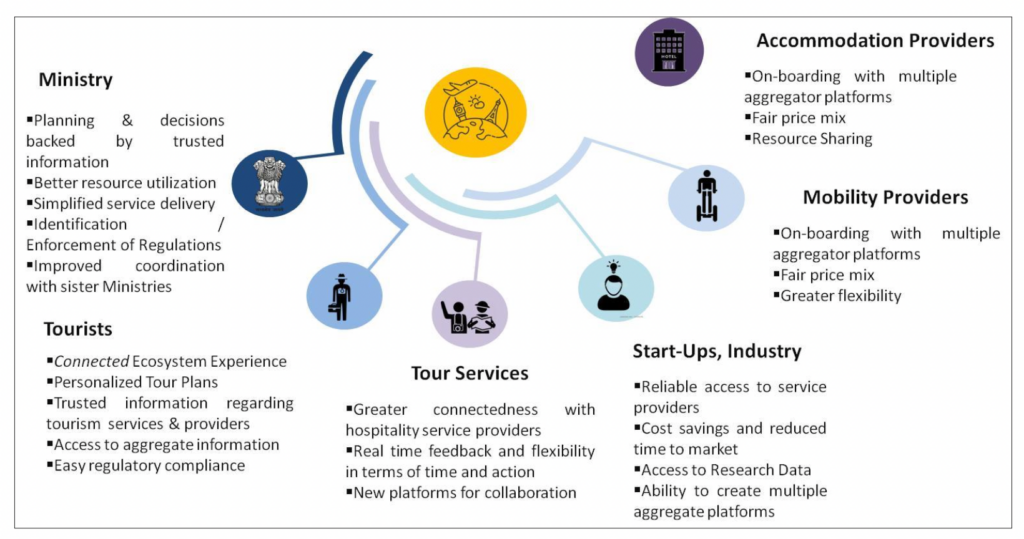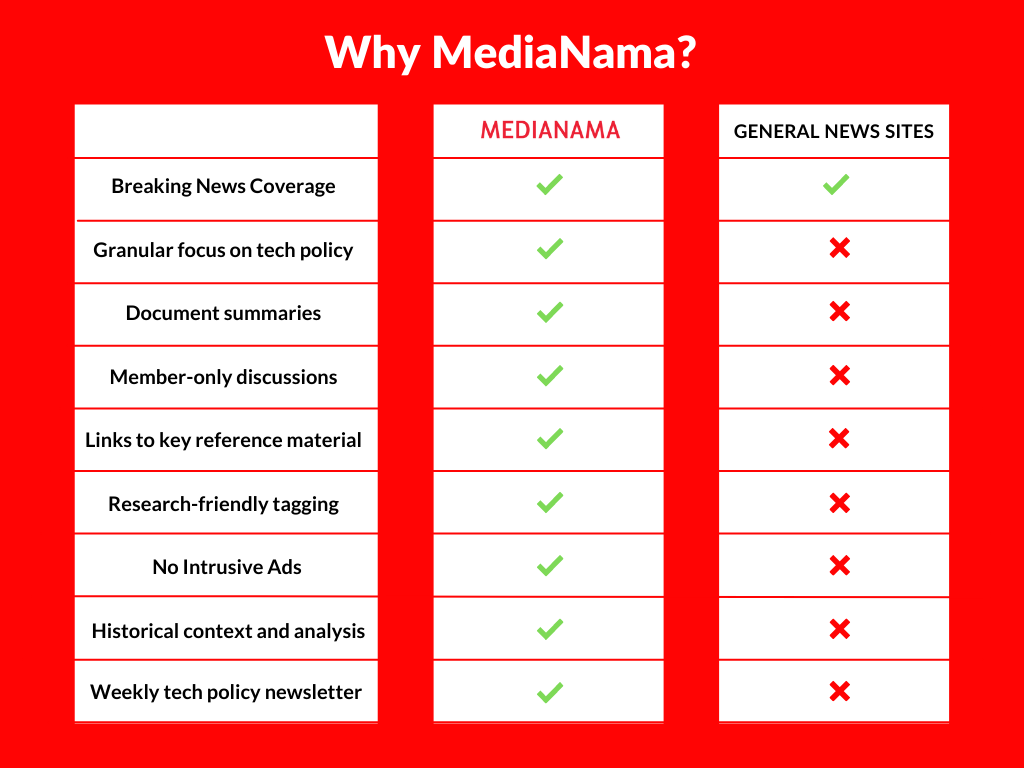The National Digital Tourism Mission (NDTM) task force on March 9 submitted its report which proposes the creation of a Unified Tourism Interface (UTI) to enable the exchange of data among the various stakeholders of the tourism ecosystem such as tourists, travel agents, accommodation providers, transport providers, food and beverage providers, and entertainment providers.
The government constituted the task force in July 2021, noting that it wants to emulate the success of UPI and the National Digital Health Mission for the tourism ecosystem.
“At a collective level, it will help to develop and customize product offerings, improve destination connectivity, generate data to track performance, and help to improve destination management.” – NDTM task force report
MediaNama’s Take: What to watch out for?
Here are two lenses to read the summary of the report that follows:
Privacy concerns
As with many other digital initiatives of the government, the NDTM poses significant privacy concerns, especially because India is still awaiting its data protection law. There is scope for enormous amounts of personal data to be collected as part of the mission such as where someone is travelling, what they are doing in that place, how long are they there, etc. This presents an unchecked potential for scope creep. For example, one part of the NDTM report states that the digitisation of tourism will enable hyper-personalization by capturing personal data from customers and learning more about their behavioural patterns. While this sounds helpful to tourists, we should question how else this data can be used. Another example is the potential linkage to other systems like Aadhaar and NATGRID, which will generate user profiles that can easily be misused for purposes like mass surveillance. The report does state that a data governance policy will be put in place to protect the data of individuals, but without specifics such as purpose limitation, consent requirements, etc, this inclusion does not alleviate the concerns.
Inclusivity
The second major concern is how inclusive will the NDTM be. The issue we’ve had with many digitisation programmes is that not all sections of society have benefitted in an equitable way, and in some cases, digitisation has negatively affected some sections of society. For example, many doctors and smaller hospitals have complained about the high compliance cost of the National Digital Health Mission. With NDTM, the question is whether smaller establishments will be left out because of the compliance costs and how this will affect them.
Why digitise the tourism ecosystem?
Currently, most of the tourism systems developed by the central government, state governments, public sector and private sector function in silos because of which the tourism ecosystem is unable to harvest the combinatorial benefits of information exchange, the report states. There are no mechanisms in place to allow the interactions of various data systems through a common language, thereby curtailing data analytics and resultant policy-making, the report adds. To overcome this hurdle, there is a need for a standardised data exchange amongst various stakeholders, the report states.
The report looks to bridge the information gap amongst different stakeholders by creating a digital highway:
What comprises the digital stack of NDTM?
Overview
The following graphic gives an overview of the four different layers of the NDTM digital stack:
Layer 1: Cross-domain generic building blocks
The first layer of the stack is the existing digital infrastructure available to use such as Aadhaar, DigiLocker, UPI/BHIM etc. “This digital infrastructure layer helps to achieve uniqueness of key data sets, economies of scale and facilitates all India portability for stakeholders of the ecosystem,” the report states.
Layer 2: Tourism domain data
The second layer consists of core domain data related to tourism such as:
- Tourism directories: Directories of tourist attractions, tourist activities, associations, routes, accommodation type, tourist transport facilities (e.g. ropeways), festival calendar, convention halls, public utilities, etc.
- Tourism registries: Registries of tour operators, travel agents, online travel aggregators, waiters, destination wedding managers, tourist guides, chefs, coach drivers, accommodation units, eateries, circus, parks, theatre, spas, events, casinos, tourist info, etc.
- Tourism records: Tourism records will include rules and permissions, location and purpose-wise activity records, travel insurance, event calendar, shopping rate range, conferences, room rate range, footfall records, etc.
The report proposes that there be a single source of truth among departments and external agencies for the above domain data thereby providing opportunities for improved efficiency and effectiveness in governance. The creation of these directories and registries shall enable digital verification of tour operators, travel agents, licensed bars, etc., and can lead to increased trust amongst the tourist and ecosystem actors, the report adds.
Layer 3: Unified Tourism Interface
The third layer of the NDTM digital stack promotes data and information exchange amongst multiple ecosystem actors through the creation of the UTI.
To build this interface layer, actors of NDTM will be encouraged to deploy their APIs and micro-services as open APIs following the specifications and standards of NDTM. These APIs shall be deployed on the NDTM eMarketplace or API exchange, the report states. Some of the APIs in the NDTM context are:
- Discovery APIs: These APIs help the tourism ecosystem actors and tourists to connect with the ecosystem in a convenient and cost-effective manner. The systems in the tourism domain would be able to share live rate cards, get tourist accommodations availability details, tourist travel availability details, the know-how of required permissions, the know-how of applicable rules, discount details, access to multi-modal search for travel and route planning, nearby public utilities, etc., the report explains.
- Booking APIs: These APIs will allow the ecosystem actors to reserve accommodations, restaurant tables, entertainment tickets, tourist coaches, tickets and cancel reservations, apply for eVisa services etc. for tourists who provide explicit consent for data sharing, the report states.
- Other Tourism APIs: These APIs include services related to rating, payment services, certification services, licensing services, permissions services, help services and other such services, the report states.
Layer 4: User systems
The fourth layer consists of core, common, and reference systems and aggregate platforms. These aggregate platforms will be built using the Unified Tourism Interface.
- Core systems:
- Single window compliance platform: This system will provide a single-window platform to gain knowledge about rules, regulations, and compliance requirements for all actors of the tourism ecosystem. For example, tourist visitor timings, ticketing rules, special travel requirements, medical requirements, conflict zone, etc. shall be made available. For service providers, various license requirements, NOC requirements, compliance requirements, etc.
- Data analytics platform: The data analytics platform will use aggregate anonymised data for research, planning and policy-making, etc. Aggregate data sources like telecom can be used to understand the seasonality, movement patterns, trip length, etc., of tourists, the report explains.
- Common applications: This includes some common applications which can be used by both public and private players like sandbox environment, API exchange gateway, and eMarketplace. The sandbox environment, for example, will enable the various ecosystem actors to discover, understand, engage, experiment, innovate, and build on existing core data, infrastructure and exchange, the report states. The tourism eMarketplace, on the other hand, will be a national aggregate platform where customised tour packages can be made available from authorised providers for domestic and international tourists.
- Reference applications: The government may foray into building reference applications, which shall be built as open-source, and technology companies shall be encouraged to build upon these products, the report states. Examples of these applications include tour planning software for tour operators who do not have access to large aggregate digital platforms but want to provide customised deals to the client and Hospitality Facility Management ERPs as low-cost digital options for small hospitality service providers.
An autonomous body will be set up as part of NDTM
Will be modelled after other institutional set-ups: The NDTM will adopt institutional structure after study of several analogous digital infrastructures created in other sectors in India such as GSTN, NPCI, UIDAI, National Health Authority, etc, the report states. It will be composed of diverse stakeholders and will be created as an autonomous entity under the aegis of the Ministry of Tourism, the report adds.
Roles and responsibilities of the institution: The institutional structure of the NDTM will be responsible to:
- Catalyse the tourism ecosystem: The institution will be responsible for implementing the objectives of the NDTM blueprint and promoting its adoption in the ecosystem by engaging in events, hackathons, innovations, fests and other such outreach, engagement and development programs.
- Enable the development of the building blocks: The institution will also be responsible for enabling the development of the building blocks of NDTM.
- Framing standards, specifications, and policies: The institution will develop technological standards, specifications and policies for tourism, open data, and protection of data of individuals. This includes specifications of core, common, reference and other building blocks as well as setting up standards for establishment and management of registries which will be a single source of truth for tour operators, hoteliers, event managers etc.
- Encouraging innovation: The institution is expected to foster innovation and solutions by leveraging emerging technologies for the tourism ecosystem such as AI/ML, AR/VR, etc as well by creating an ecosystem sandbox.
What are the potential benefits of NDTM?
According to the report, the NDTM is envisaged to bring the following benefits to the various stakeholders of the tourism ecosystem:
What standards need to be developed for the tourism ecosystem?
- Open protocols: The report proposed setting up a committee consisting of technical representatives from different ministries, states, experts, academia, and industry to collaborate with BIS for ratification of open API specifications and protocols that pertain to microservices for standardised open data and other domain apps in the tourism ecosystem.
- Data governance policy: “In order to ensure data protection, data quality, data security, data privacy, data sharing obligations, portability and interoperability and compliances under the applicable laws, a data governance policy will be framed specifying roles and responsibilities of various ecosystem actors towards maintaining and facilitating reliable data exchange,” the report states.
- Domain standards: The report prescribed introducing domain standards for star ratings of accommodation units, classification of transport as luxury, standard or local, badges for tourist agents and tourist drivers, classification of tour operators, sustainable tourism criteria of India etc.
Ten key principles of NDTM
-
- Building block approach: The ecosystem will be built with minimal and reusable building blocks, categorised as Core, Common and Reference Building Blocks which are loosely coupled and combinable.
- Federated architecture: The report proposes a federated architecture model for designing the digital ecosystems, which will be built around the constructs of Single-Source-of-Truth and System-of-Records. “While a central system can speed up adoption, it should be a choice, and bringing interoperability across many federated systems through common specifications is necessary,” the report explains.
- Be open and interoperable: The digital ecosystem should be developed using open standards, licenses, databases, APIs, etc. and promote interoperability. This helps realise inter-platform efficiencies, promotes competitive behaviour and guards against potential monopolies of unfair value capture, the report states.
- Resilient: There should not be single points of failure and services must be built to withstand failures by building automated recoveries and adaptation.
- Minimal, reusable, unbundled, and shareable: The various building blocks must be minimal (both data and functional), atomic, and generalised allowing solution builders to “reuse and extend” them to build contextual and scalable solutions.
- Setting up data marketplace: The report states that data systems should be designed in a manner that creates, supports, maintains and enhances value to the ecosystem in general. To do some, the report proposes the establishment of Data Marketplace(s) that enables regulated exchange of data.
- Data sharing: The report calls for clear policies specific to the relevant domain(s), that enable and regulate the sharing of data.
- Standards: The report states that existing technology and data standards applicable to the ecosystem should be specified and methods to ensure compliance should be designed.
- Privacy-by-Design: The report advocates for designing and publishing a privacy policy that conforms to the principles of privacy-by-design.
- Secure and trust-based: The NDTM should be designed to protect the privacy of users and entities while inducing trust in every interaction.
This post is released under a CC-BY-SA 4.0 license. Please feel free to republish on your site, with attribution and a link. Adaptation and rewriting, though allowed, should be true to the original.
What will be the future of data governance in India?
Do you want to keep track of data sharing frameworks in India but don’t have the time? Relying on scattered content from across the web makes it feel harder than it needs to be.
Subscribe to MediaNama and get crisp, timely updates on tech policy developments in India and across the world.
Also Read:
- NATGRID: Government’s Controversial Surveillance Project In Final Stages
- Oyo, Airbnb, EaseMyTrip, Yatra Join Hands To Form Industry Body For Tourism Sector
- Summary: Draft India Enterprise Architecture (InDEA) Framework 2.0
Have something to add? Subscribe to MediaNama here and post your comment.






